C1.5 - History of Life and Modern Additions to Evolution
PART I: History of Life
The Early Earth
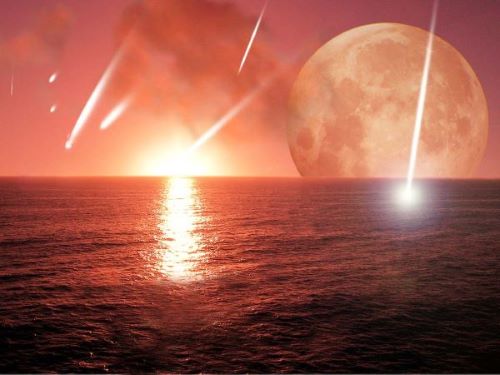
- Characterized by extreme heat, high UV, radio and electrical activity
- Primitive atmosphere contained nitrogen (N2), carbon dioxide (CO2), carbon monoxide (CO), ammonia (NH3), methane (CH3)
- Asteroid impacts common
- Surface gradually cools, water vapour condenses forming oceans
Miller-Urey Experiment
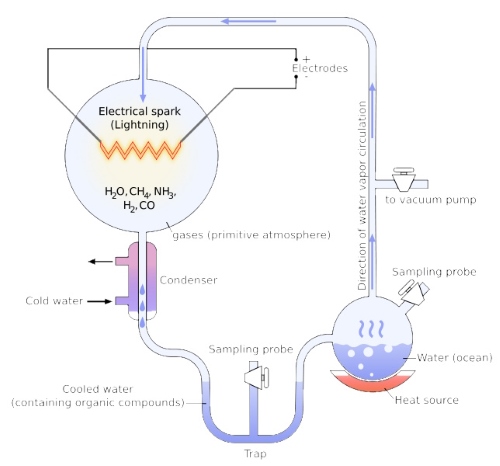
- First life forms arose by primary abiogenesis theory
- primary abiogenesis theory: theory where life arose from no life
- Complex organic molecules form spontaneously
- organic molecules: molecules that contain carbon
- Miller-Urey experiment recreated early atmosphere
- Sugars, amino acids, and nitrogenous bases created (building blocks of life)
- Thermal proteinoids: protein-like molecules formed abiotically from amino acids
The Oldest Fossils
- 400 my after Earth’s formation: Earth’s crust begins to cool and solidify
- 3.5 bya: life on Earth confirmed
- stromatolites: layered rocks that form when certain prokaryotes bind thin layers of sediment together
- perhaps life in simpler forms began 3.9 bya
Protocells
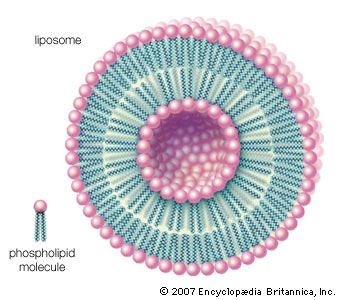
- All living things composed of cells
- Compartmentalization necessary
- liposomes: lipid membrane
- Lipid membranes form spontaneously
- Membranes may act as semi-permeable barriers
Early Life
- RNA world? No DNA?
- Oldest fossils 3.5B yrs. old
- Oldest life perhaps may have formed in deep sea hydrothermal vents
- Cyanobacteria-like organisms (blue-green)
- Anaerobic and chemoautotrophs
- anaerobic: can break down glucose to energy w/o oxygen
- chemoautotroph: makes own energy through chemical reactions
- believed that oldest fossilzed prokaryotes evovled from them
- Eukaryotic cells (complex cells w/ nucleus) arise through endosymbiosis
- endosymbiosis: organism that lives within body/cells of another organism
Endosymbiotic Theory
- eukaryotes: cells w/ membrane-bound organelles, nuclei, and complex organelles like mitochondria
- Infolding of membrane formed endoplasmic reticulum and nucleus
- heterotroph: organism that ingests organic carbon to produce energy
- Consumption of heterotrophic cell formed mitochondria
- Consumption of photosynthetic cell formed chloroplasts in plants
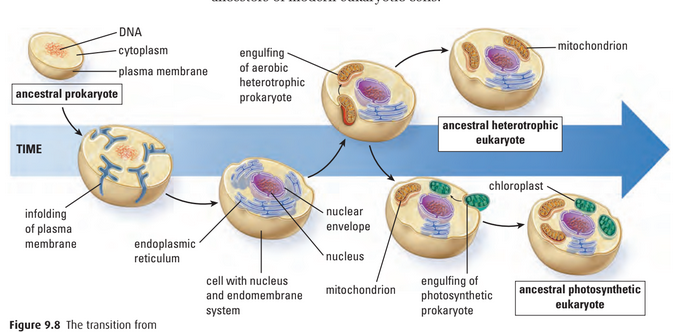
The Cambrian Explosion
- Multicellular organisms arise 750 mya
- 565 mya: Animal kingdom undergoes dramatic increase in diversity
- All major animal groups arise in Cambrian explosion
- Early animals preserved in Burgess Shale
Cambrian Explosion illustration
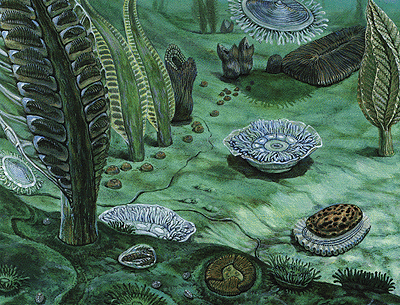
Burgess Shale
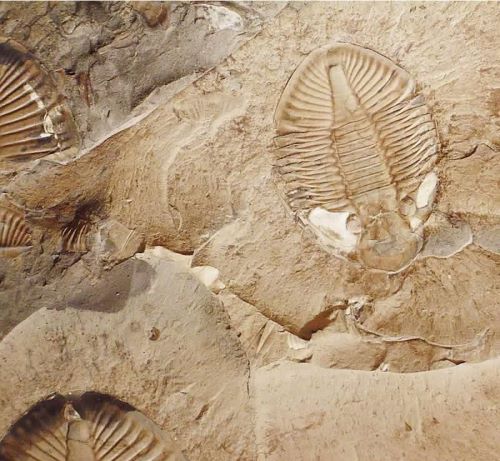
Extinction Events
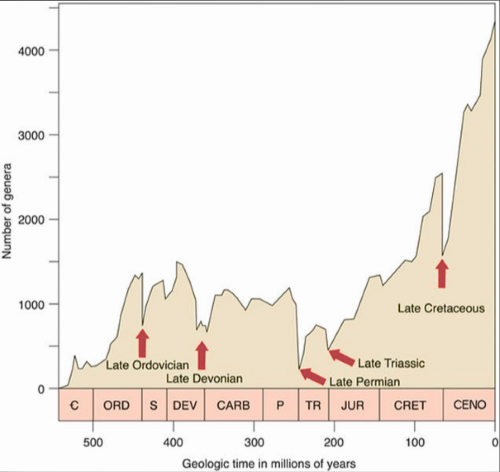
- Geological time divided into 5 eras, subdivided into periods and epochs
- mass extinction: brief episodes of great species loss
- 5 major extinction events
- 65 mya: Cretaceous extinction ends the age of dinosaurs and gives rise to mammals
- meteor strike near land mass that became Yucatan Peninsula, Mexico
- polluted sky w/ debris for months
- dinosaurs thrived on Earth for 150 my
- all dinos gone, except those that evolved into birds
- end of Permian period
- 90% of marine animals lost
- pseudoextinction: the species never went extinct, they just evolved
- positive side: adaptive radiation of survivors forming new biodiversity
- 6th great extinction?
Fossil Record and Geologic Time Scale
- geologic time scale: scale that organizes Earth’s geological history into distinct blocks of time
- era: block of time
- period: block formed by dividing era
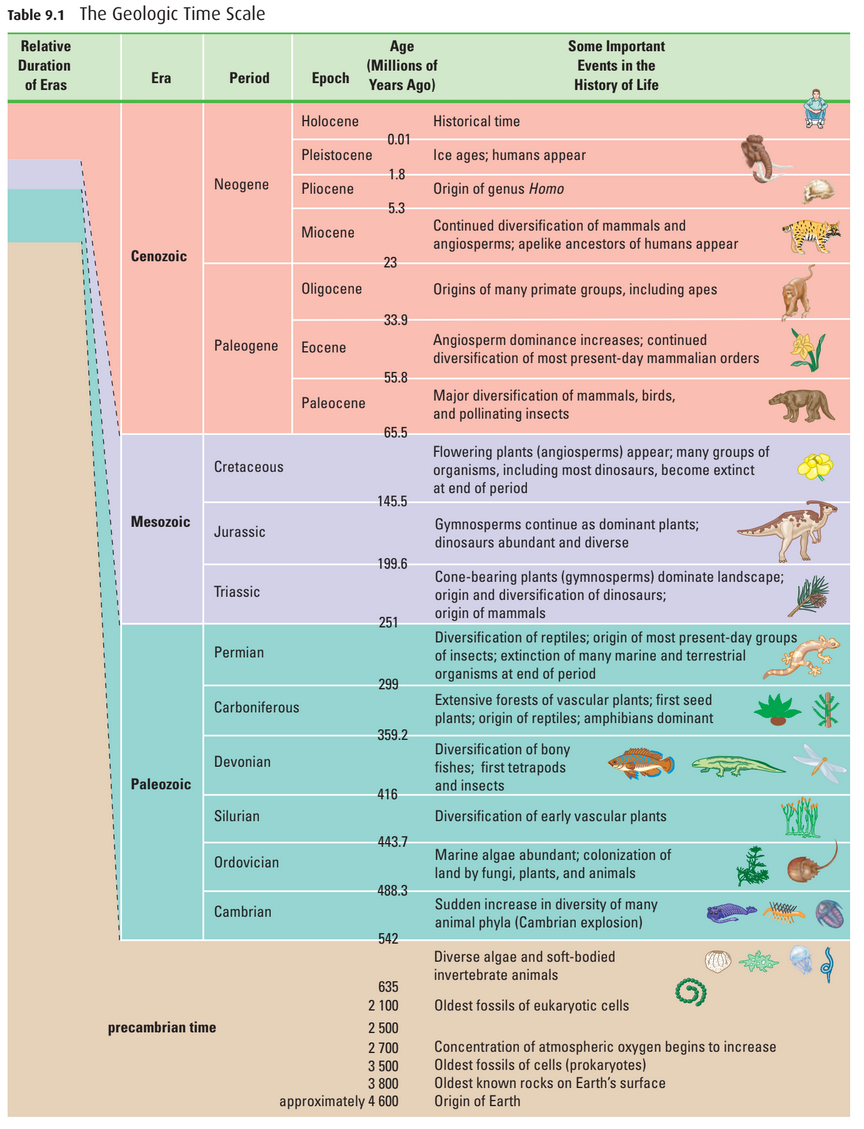
Continental Drift
- Earth’s continents move on plates floating on hot mantle
- continental drift: movement of continents
- N.A. and Europe currently drifting apart ~2 cm/yr.
- solution to many biological puzzles
- i.e. matching Mesozoic fossils in W. Africa and Brazil
- same fossil in parts of world separated by 3,000 km of ocean?
- evidence makes sense if part of one land mass during that time
- explains why life on Australia is so diff. from rest of world
Formation and Breakup of Pangaea
- 250 million years ago, continents formed one landmass called Pangaea (“all land”)
- shorelines reduced, sea levels dropped, shallow seas drained
- many marine habitats destroyed
- inland areas became drier with extreme climates
- species that evolved separately were forced to compete
- led to mass extinctions
- 180 million years ago, Pangaea began breaking apart
- continents drifted and became isolated
- species evolved separately on different land masses
- marsupials survived in isolated Australia
- placental mammals dominated other continents
- explains Australia’s unique marsupial diversity
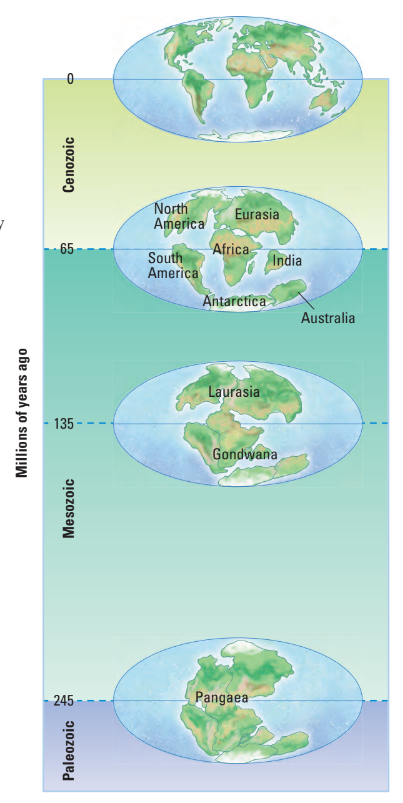
Phylogeny
Please see Diversity of Life
Human Disruption — Bison Skull Hunting and Processing
Bisons hunted w/ rifles which are accurate and have fairly fast reloads
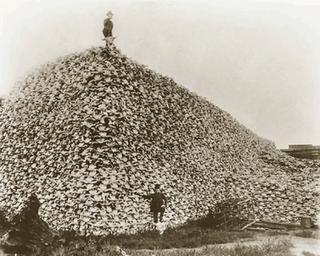
PART II: Modern Additions to the Evolutionary Theory
Rate of Evolution
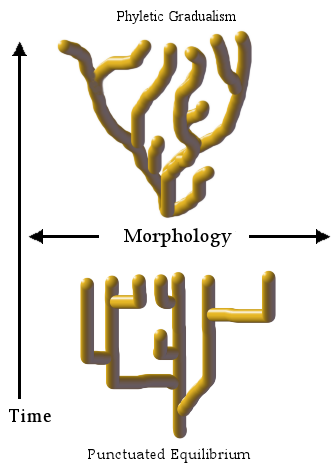
- gradualism: evolution of species by gradual accumulation of small genetic changes over a long period of time
- asserts slow, gradual change
- small changes accumulate in species over time
- first developed by Charles Darwin
- limitation: in fossil record, species would arise abruptly, persist in rock for thousands/mil. of years, then disappear suddenly
- punctuated equilibrium: species often diverge in sudden bursts of rapid evolutionary change
- developed in 1972 by paleontologists Niles Eldridge and Stephen Jay Gould
- large changes occur rapidly followed by little change
- term comes from idea that long periods of little evolutionary changes (equilibrium) are broken (punctuated) by shorter bursts of speciation
FUN FACT: Okapis and giraffes share the same evolutionary common ancestor
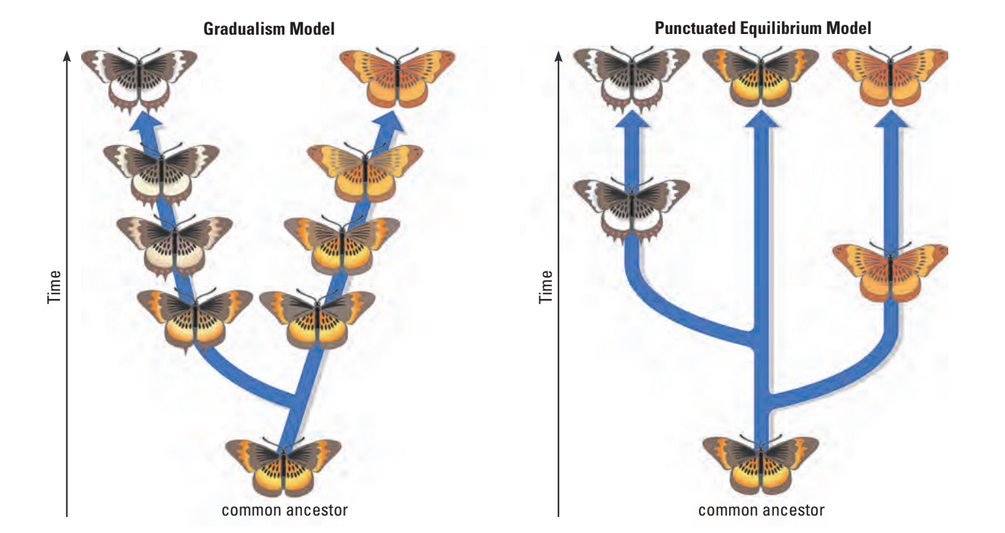
Divergent and Convergent Evolution
- divergent evolution: evolution that creates species diverging in similarity
- adaptive radiation: when one species gives rise to many distinct species
- caused by small founding group colonzing new environment and adapting to its environment over generations
- the new group changes and loses compatibility with original group
- convergent evolution: distantly-related species develop similar adaptations, “analogous structures”
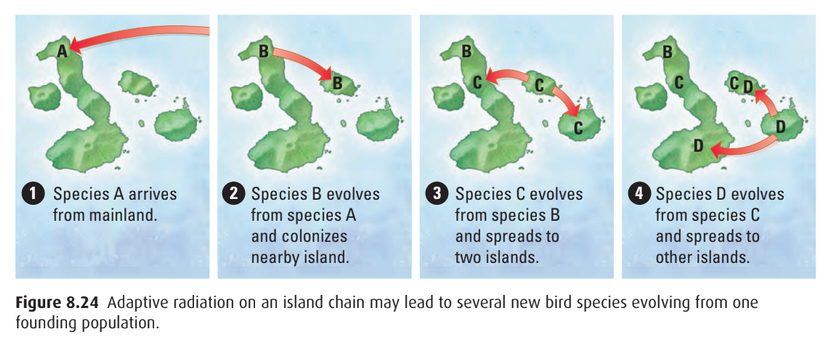
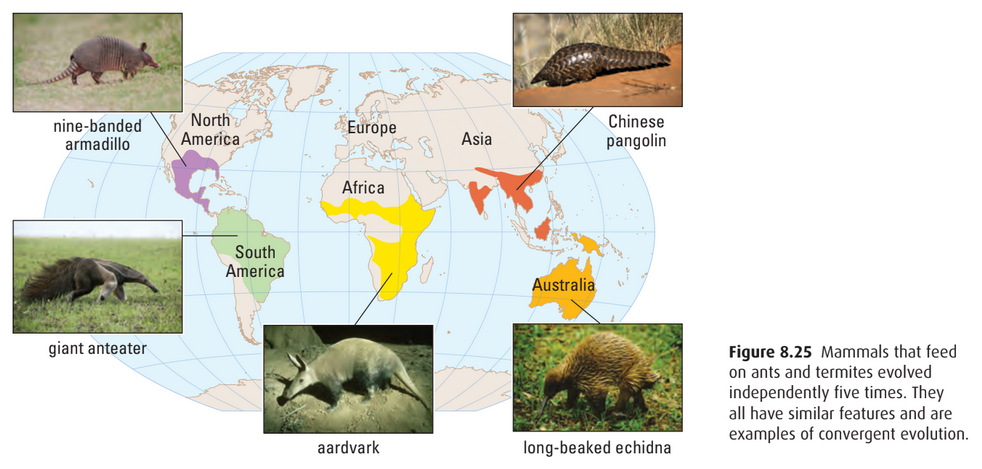
Co-Evolution and Mimicry
- co-evolution: one species evolves in response to another species’ evolutionary changes
- mutualism: when two species support each other in order to survive
- i.e. flowers and insects have a mutual relationship w/ each other; insects get food and flowers get pollinated
- Plants evolved toxins to prevent insects from eating them, but insects also evolved to resist these toxins to eat them again
- i.e. milkweed plants produce toxins, but monarch caterpillar can handle toxins and store them so that they aren’t eaten
- mimicry: one species evolves to represent another species to gain a survival advantage
- i.e. hoverfly looks like a wasp, and predators avoid both to avoid a poisonous sting
Sources
- Mr. C. Jones
- BiologySource 11